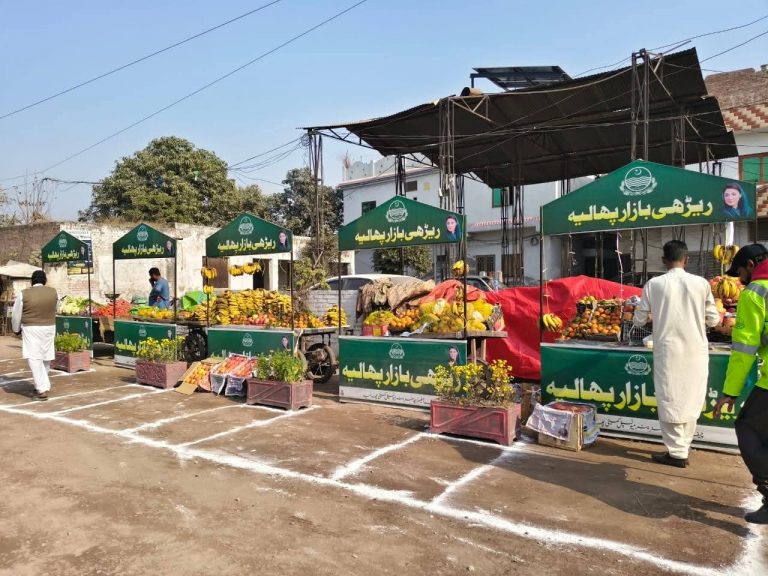
(By Kainat Rajput)
The Birth of Sikhism: Guru Nanak’s Vision
Guru Nanak Dev Ji, the founder of Sikhism, was born in 1469 in Rai Bhoi di Talwandi, now known as Nankana Sahib, in present-day Pakistan. Raised in a Hindu Khatri family, Guru Nanak exhibited profound spiritual inclinations from a very young age. He was deeply moved by the religious disparities and social injustices of his time, including the rigid caste system, idolatry, and the divisions between Hinduism and Islam. Guru Nanak was known for his inquisitive mind, and by the time he reached adulthood, he had developed a unique perspective on religion and spirituality.
At the age of 28, Guru Nanak experienced a divine revelation during a bath in a river, after which he disappeared for three days. Upon returning, he proclaimed, “There is no Hindu, there is no Muslim,” emphasizing the unity of all humanity and the oneness of God. This profound realization led him to formulate the key principles of Sikhism: Ik Onkar (One God), equality, social justice, and devotion to service (Guru Nanak: His Life and Teachings by Dr. Gopal Singh).
Guru Nanak’s teachings cantered on direct devotion to God, breaking barriers between different religious communities, and striving for social justice. He challenged the prevailing religious orthodoxy of the time, which was dominated by a rigid social hierarchy and ritualistic practices. He advocated for a direct relationship with God, without the need for intermediaries, and encouraged people to see beyond religious boundaries. Guru Nanak’s teachings are compiled in the Guru Granth Sahib, the central religious scripture of Sikhism. His hymns form the spiritual foundation of Sikhism and continue to inspire millions of followers worldwide (The History of Sikhism by Dr. Harbans Singh).
The Influence of Baba Farid on Sikhism
Baba Farid, also known as Sheikh Fariduddin Masood Ganj Shakar, was a 12th-century Sufi saint whose teachings left a significant imprint on Sikhism. Born in 1188 in present-day Pakistan, Baba Farid’s poetry emphasized the transient nature of life and the importance of devotion to the Divine. His mystical teachings were based on the concept of submission to God and the pursuit of inner peace through spiritual practice (Baba Farid: The Sufi Saint and His Influence on Sikhism by Dr. Bawa Singh).
Guru Nanak acknowledged Baba Farid’s spiritual wisdom, and many of Baba Farid’s hymns were included in the Guru Granth Sahib. A total of 134 hymns attributed to Baba Farid is found in the scripture, reflecting themes of humility, love for God, and the impermanence of worldly possessions. His poetry speaks of the futility of material wealth, urging individuals to focus on spiritual growth and the worship of one true God.
Baba Farid’s teachings also highlighted the importance of humility, tolerance, and respect for all living beings. Guru Nanak, in turn, adopted and propagated these values, blending them with his own vision of spiritual unity, thereby deepening the inclusive ethos of Sikhism. These principles are evident in both Baba Farid’s work and Guru Nanak’s teachings, which continue to guide Sikhs toward an inclusive and compassionate worldview.
Guru Nanak’s Early Life in Sheikhupura
While Guru Nanak was born in Nankana Sahib, he spent a significant part of his early life in Sultanpur Lodhi. However, the region of Sheikhupura, encompassing areas like Muridke, holds historical significance in Sikh history. Muridke is known for its association with the great Sufi saint Baba Farid, whose teachings profoundly influenced the spiritual landscape of the region.
Sheikhupura, a town in Punjab, Pakistan, is closely linked to the Sufi tradition, and it was here that Guru Nanak, influenced by the teachings of Baba Farid, began to form his own religious and philosophical views. Guru Nanak’s interactions with various spiritual traditions, including Sufism, Hinduism, and Islam, shaped his inclusive approach to spirituality. He often engaged with religious leaders from both Hindu and Muslim communities, trying to break down the barriers that divided them. His inclusive spiritual message, built on equality and unity, took root during his time in Sheikhupura.
Guru Nanak’s life in Sheikhupura served as a foundation for his later travels, where he spread his message of equality, unity, and devotion to one God. His experiences in the region of Sheikhupura, with its rich spiritual and cultural diversity, helped him craft the spiritual vision that would later become the basis of Sikhism.
The Emergence of the Khalistan Movement
The call for Khalistan, an independent Sikh state, emerged in the 20th century, primarily as a response to perceived injustices and violations of Sikh rights in India. The roots of the Khalistan movement can be traced to the aftermath of India’s independence in 1947, when religious and political challenges began to affect the Sikh community. Despite being a significant minority in India, Sikhs were often marginalized and faced systemic discrimination.
The movement gained considerable momentum in the 1980s, particularly after Operation Blue Star in 1984, a military operation carried out by the Indian government under Prime Minister Indira Gandhi. The operation aimed to remove militants from the Golden Temple, the holiest site in Sikhism, but it resulted in significant loss of life and damage to the sacred shrine. The operation was seen as a violation of Sikh religious rights and an attack on the Sikh community (The Khalistan Movement: A Struggle for Sikh Autonomy by Dr. Gurinder Singh Mann).
In the wake of the operation, demands for an independent Sikh state, Khalistan, gained strength. The creation of Khalistan was seen by many Sikhs as the only way to protect their religious and cultural identity from further marginalization and injustice. The trauma caused by the events of 1984 intensified the call for a separate homeland for Sikhs. The movement, however, has been controversial, with some viewing it as a violent and divisive cause, while others see it as a legitimate response to the injustices faced by the Sikh community.
The Khalistan movement is a separatist movement that seeks to establish an independent Sikh homeland, based on the principles of Sikhism. Proponents of Khalistan argue that Sikhs have the right to self-determination and should not be governed by a state that fails to protect their rights and freedoms. The movement has resonated particularly within the Sikh diaspora in countries such as Canada, the United Kingdom, and the United States. These communities argue that the Indian state has consistently violated Sikh rights and has failed to protect Sikhs from religious persecution. The demand for Khalistan is seen by many as the only way to ensure the protection of Sikh identity and culture (The Khalistan Movement: A Struggle for Sikh Autonomy by Dr. Gurinder Singh Mann).
Contemporary Challenges and the Call for Justice
Despite the passage of decades, the Sikh community continues to face challenges related to human rights and religious freedoms in India. Incidents of discrimination, surveillance, and suppression of Sikh voices persist, leading to calls for greater autonomy and recognition of Sikh rights. The Indian government’s stance on the Khalistan movement remains a sensitive issue, with authorities often labelling proponents of the movement as extremists.

The Sikh diaspora, particularly in countries like Canada, the United Kingdom, and the United States, has become increasingly vocal in supporting the Khalistan cause. These communities argue that the Indian state has consistently violated Sikh rights and has failed to protect Sikhs from religious persecution. The demand for Khalistan is seen by many as the only way to ensure the protection of Sikh identity and culture (Guru Nanak: His Life and Teachings by Dr. Gopal Singh).
Human rights organizations and international bodies like the United Nations have been urged to take note of the ongoing discrimination against Sikhs in India. Many Sikh organizations continue to advocate for justice, with calls for the recognition of Sikh history, culture, and religious practices in India and abroad. The international community’s role in supporting these efforts remains crucial, as issues of religious freedom and minority rights take centre stage in global discussions.
Conclusion
The history of Sikhism, from Guru Nanak’s pioneering spiritual vision to the contemporary call for Khalistan, represents a journey of resilience, faith, and perseverance in the face of injustice. Guru Nanak’s teachings of equality, service, and devotion to one God laid the foundation for a vibrant and deeply spiritual community. The influence of figures like Baba Farid enriched this vision, making Sikhism a religion of inclusivity and compassion. As the Sikh community continues to face challenges in both India and the diaspora, the call for Khalistan remains a symbol of resistance against oppression. It reflects the desire for justice and the preservation of cultural and religious identity in a world that has often marginalized Sikhs. Understanding this history and its present-day implications is crucial for fostering dialogue and promoting the protection of minority rights, both within India and globally.





